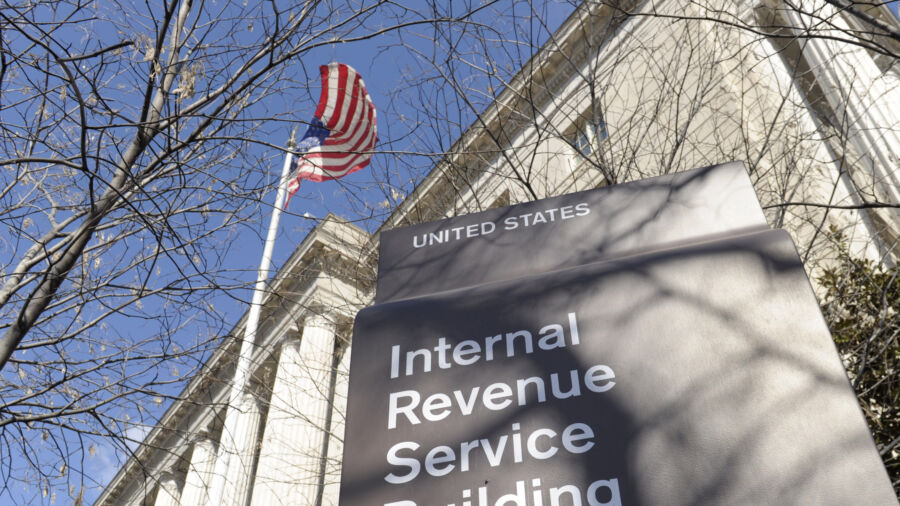The Internal Revenue Service (IRS) announced on Friday that it has increased the amount individuals can contribute to their 401(k) plans for 2025.
The agency also announced the increase in its annual cost-of-living adjustments for pension plans and other retirement-related items.
For the tax year 2025, the amount most individuals can contribute annually to their 401(k) plans will increase by $500 from $23,000 in 2024 to $23,500 in 2025. Several other retirement plans will incorporate the same increase for the following tax year, including 403(b) plans, most 457 plans, and the federal government’s Thrift Savings Plan for workers.
The annual contribution limits for Individual Retirement Accounts (IRAs) will remain $7,000, including traditional and Roth IRAs. The IRA catch-up contribution limit for people aged 50 and over was changed to include an annual cost-of-living adjustment, but remains at $1,000 for 2025.
For employees aged 50 and over, the catch-up contribution limit for most 401(k), 403(b), governmental 457 plans, and the federal government’s Thrift Savings Plan will remain at $7,500 for 2025. Individuals aged 50 and over who participate in most 401(k), 403(b), governmental 457 plans, and the federal government’s Thrift Savings Plan can contribute up to $31,000 each year, starting in 2025.
Employees aged between 60 and 63 who participate in these plans will receive a higher catch-up contribution limit, which increased from $7,500 to $11,250 under a change made in the SECURE 2.0 Act of 2022.
The income ranges to determine eligibility to make deductible contributions to a traditional IRA, to contribute to Roth IRAs, and to claim the Saver’s Credit, all increased for 2025.
IRA Plans
Taxpayers can contribute to a traditional IRA and receive a tax deduction for their contribution if they meet certain conditions. In addition to the contribution limits, phase-outs apply.
If, during the year, either the individual or the individual’s spouse was covered by a retirement plan at work, the deduction may be reduced or phased out until it is eliminated, depending on filing status and income.
- For single taxpayers covered by a workplace retirement plan, the traditional IRA contribution tax deduction phase-out range is increased to between $79,000 and $89,000, up from between $77,000 and $87,000.
- For married couples who file joint tax returns, if the spouse making the IRA contribution is covered by a workplace retirement plan, the phase-out range is increased by $3,000 from last year to between $126,000 and $146,000 for 2025. The IRS noted that for a married individual filing separately from a spouse covered by a workplace retirement plan, the phase-out range is not subject to an annual cost-of-living adjustment, and remains between $0 and $10,000.
- For an individual contributor to an IRA who is not covered by a workplace retirement plan and is married to someone who is covered, the phase-out range is increased to between $236,000 and $246,000.
Roth IRA Plans
- For single persons and heads of households, the income phase-out range for taxpayers who are contributing to a Roth IRA increased to between $150,000 and $165,000, up from between $146,000 and $161,000 in 2024.
- A married couple’s income phase-out range is increased to between $236,000 and $246,000, a $6,000 increase from between $230,000 and $240,000 in 2024. For a married individual filing a separate return who makes contributions to a Roth IRA, the phase-out range is not subject to an annual cost-of-living adjustment, and remains between $0 and $10,000.
Saver’s Credit
Saver’s Credit, also known as the Retirement Savings Contributions Credit, is targeted at low- and moderate-income workers.
The income limit for married couples filing together is $79,000, up from $76,500. For heads of households, the limit increased from $57,375 to $59,250 in 2025, and for single persons and married individuals filing separately, the amount rose to $39,500, up from $38,250.
SIMPLE Retirement Accounts
SIMPLE IRA plans, which stands for Savings Incentive Match PLans for Employees, are for small-business employers who are not currently sponsoring a retirement plan to contribute to traditional IRAs set up for employees.
- The amount that individuals can contribute to their SIMPLE retirement accounts will increase to $16,500 in 2025, up from $16,000.
- The catch-up contribution limit for employees 50 and over who participate in SIMPLE plans remains at $3,500 for 2025.
- Employees aged 60 to 63 who participate in SIMPLE plans have a higher catch-up contribution limit of $5,250.

